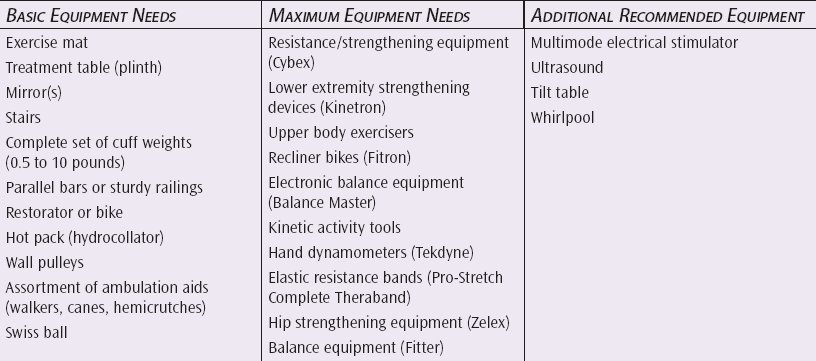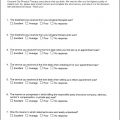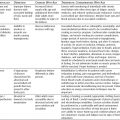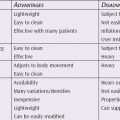ADMINISTRATION OF GERIATRIC SERVICES
PEARLS
❖ The components of administration are finance and budgeting, policies and procedures, legal concerns, employee relations, and marketing.
❖ Budgeting is defined as providing a monetary sketch of the department or clinic, and a realistic budget is essential to the financial well-being of the business.
❖ Need, advantages, disadvantages, and cost are all important considerations when purchasing equipment.
❖ An organizational plan is a visual chart of the administrative hierarchy.
❖ The plaintiff has a case if the plaintiff can show actual harm resulted from an action, or if the therapist practiced below local or national standards.
❖ Equipment should be calibrated annually, and more sophisticated equipment should have precautions and directions posted.
❖ Marketing is identifying services to be offered and promoting, pricing, and distributing these services to the patients.
As the role of the geriatric rehabilitation therapist continues to evolve, the development of excellent clinical skills will be needed in administering care in nursing homes, hospitals, rehabilitation centers, outpatient clinics, and home health agencies. Therapists will be asked to provide administrative advisement and supervision for professional, as well as adjunct, staff.
Therefore, it is imperative that rehabilitation therapists become aware of all aspects of administration. This chapter has 2 goals: first, to familiarize therapists with administrative terms and concepts, and second, to serve as a reference for therapists working in a rehabilitation facility or a physical or occupational therapy department.
DESCRIPTION OF ADMINISTRATION
Administration is an extremely complex term. It involves not only paperwork for developing a policy and procedure manual, finance, and budgeting but also developing guidelines for effectively managing and motivating people. For the purposes of this chapter, administration will be divided into the following 5 areas:
- Finance and budgeting
- Policies and procedures
- Legal concerns
- Employee relations
- Marketing
The needs of administration vary by position. For example, if the therapist is a staff therapist, his or her administrative needs may be minimal. This therapist may be asked to fill out documentation forms, send in billing slips, and play a very limited role in managing employees. On the other hand, if a therapist is in charge of an entire department, he or she may need to develop human resource information, such as employee handbooks, compliance manuals, billing procedures, documentation procedures, or finance and budget procedures as well as equipment use forms and marketing strategies. Therefore, the best approach to acquiring an understanding of administrative needs is to gain an understanding of the information in each of the 5 major areas listed.
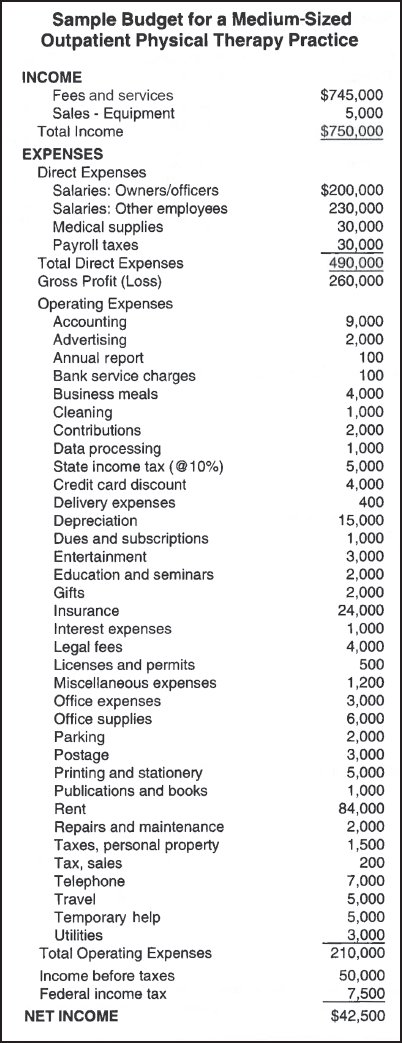
Figure 19-1. A sample budget for a medium-sized outpatient practice.
FINANCING AND BUDGETING
Financing and budgeting can be defined as a monetary sketch of the needs and plans of a department in any setting. If a therapist works in an outpatient facility for example, items that must be budgeted are rental of space, equipment, staff time, and ancillary staff (such as receptionists or aides) as well as laundry and other line items. Based on the number of patients who will be seen, the anticipated income, and the costs, the therapist must establish a workable budget for the amount of money dispersed vs the amount of incoming money.
A realistic budget is essential to the financial well-being of a physical or occupational therapy business. No matter how effective the treatment and how dedicated the staff, the hard reality is that if income does not exceed expenditures, the business will fail. Descriptions of the nuances of finance and budget can be gleaned from any elementary course in business, but the difficult part is applying the practices to an actual business.
Figure 19-1 is a notational example of a budget for a medium-sized (gross annual income between $500,000 and $1,000,000) physical therapy business, adapting data from an actual practice in a large metropolitan area. While the specifics are dependent on a wide range of variables, the rough order of magnitude of the percentages spent on various services should be a useful guide.
Figure 19-1 illustrates several points. First and foremost, a profit must be made to ensure the long-term viability of the practice. Next, the income comes from services delivered, and expenses should be made only for those items that contribute to earning that income. Budgets should also be living documents. No matter how well planned a budget is, actual income and expenses will vary, and the budget should be modified accordingly during the year.
The financial health of the business should be checked at least once a month. This is a useful time period because it coincides with the normal cycle of bank statements as well as payments by insurers and other health care agencies.
In a nursing home setting, therapists who are planning and working in a department will use a similar type of budget and have similar types of concerns. Figure 19-2 gives examples of a financial report and budget for a nursing home.
POLICIES AND PROCEDURES
Organizing and Planning for Staff, Equipment, and Supplies
Equipment and supplies can be broken up into the equipment and supplies needed by the department vs the equipment and supplies needed for the patient. With respect to departmental equipment, therapists specializing in geriatrics must assess whether or not their equipment will provide a return on investment.
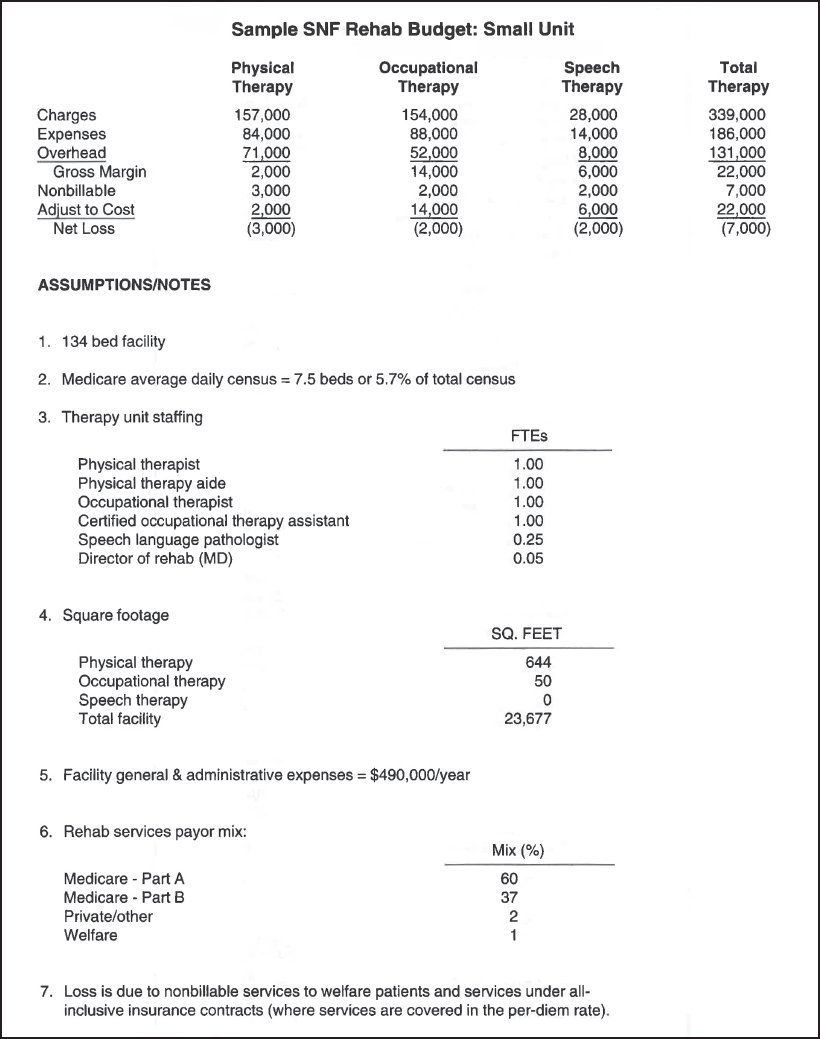
Figure 19-2A. A sample skilled nursing facility rehabilitation budget for a small unit. (Reprinted from Medical and Rehabilitation Specialists.)
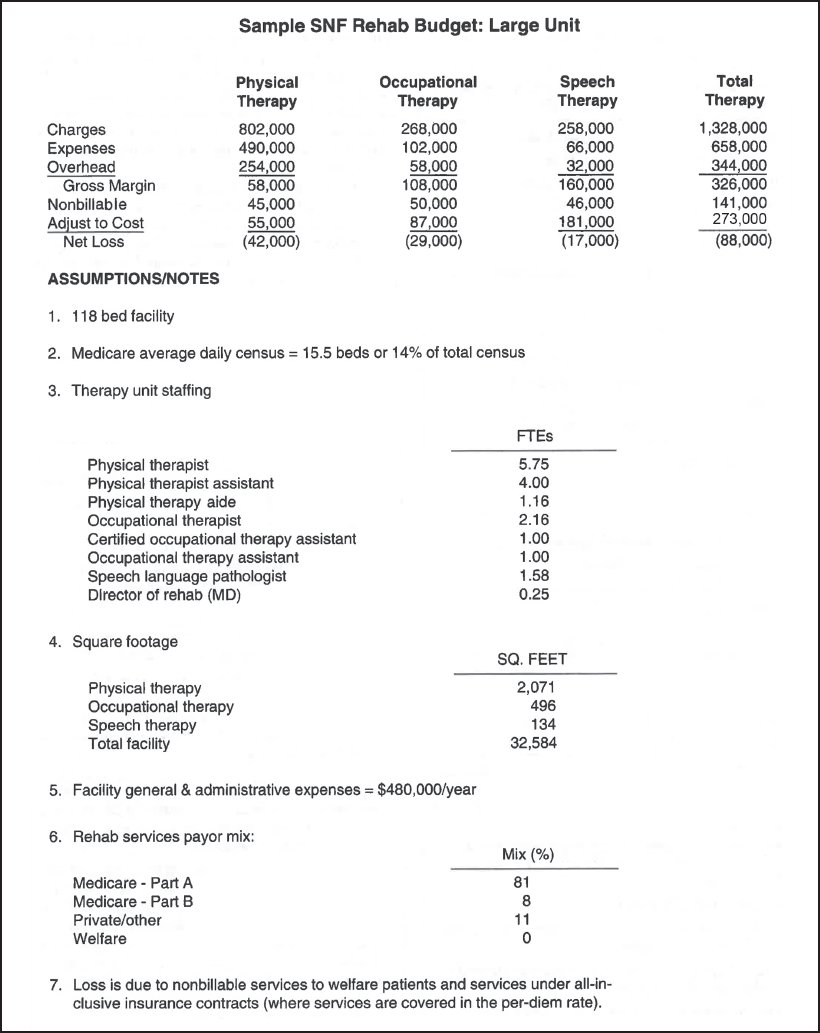
Figure 19-2B. A sample skilled nursing facility rehabilitation budget for a large unit. (Reprinted from Medical and Rehabilitation Specialists.)
For example, if one were to purchase an expensive piece of exercise equipment, would this in fact provide enough revenue to justify the expense? When writing requests for equipment or in looking for equipment for self-purchase, the therapist should keep in mind the following variables: need, advantages, disadvantages, and cost. For example, therapists can purchase parallel bars, and these bars provide needed standing support for gait, balance, and posture work. The advantage of parallel bars is that there is a well-documented history of use in the clinical setting. The main disadvantages are that they are expensive and space consuming. Access to a sturdy railing might be an alternative. In this type of setting, the railing also can be used for gait training.
A department can be sparse, with hooks on the wall for attachment of exercise bands to be used in progressive resistance exercises, or it can be more high technology, with isokinetic equipment and high-tech balance machines. However, this level of sophistication is not always necessary. Table 19-1 presents a listing of the minimum equipment necessary for a nursing home as well as a more comprehensive listing for a high-tech facility.
Another important category of equipment and supplies is durable medical equipment. To administer efficiently what a facility needs of this type of equipment, therapists must develop policies and procedures to monitor rental, purchase, and resale of the equipment. Therapists in the administrative capacity must develop procedures for purchase or rental of equipment for patient use based on the type of equipment that the patient needs.
Table 19-2 provides a sample of procedural record disbursement of medical supplies in a nursing home facility. This policy and procedure can be modified slightly to be used in an outpatient and hospital setting as well.
Developing Organizational Goals, Philosophy, and Plan
Before developing an outpatient or nursing home department, therapists should carefully review their expected goals and plan accordingly. What is the mission statement of the department? In other words, what are the goals, and what kind of plan is one going to use to attain these goals in this setting? In an existing setting, the organizational goals and plans should be reviewed periodically to see that they correspond to the current structure of the practice.
Goals
Reviewing an organization’s goals and objectives will provide the therapist with an idea of the direction in which the practice is or should be moving. Is the practice providing standard care to a small community, moving toward high-quality care in the current area, or expanding into a larger area? Therapists must determine if these goals agree with their own goals for the future. Does the therapist want to stay in a small practice working a regular schedule and doing the best possible job with the available resources? Or is the therapist trying to expand the practice, get involved in a larger company, or both? In trying to focus on these issues, it is important to clarify the individual therapist’s goals as they relate to the organizational goals of the practice.
Philosophy
Table 19-3 provides a sample mission statement and philosophy statement. Therapists in a supervisory role should use the type of guidelines suggested in Table 19-3 to develop their own personal philosophy, taking into consideration not only current goals but also expected goals for the next 5 to 10 years.
Table 19-3. Sample Mission Statement and Philosophy Statement
MISSION STATEMENT
Our mission is to provide the highest-quality rehabilitation services that:
- Meet and maximize each resident’s individual needs
- Promote the quality of life of each resident entrusted to our care
- Use highly trained rehabilitation professionals
- Integrate an interdisciplinary approach toward the rehabilitative potential of each resident
PHILOSOPHY OF RESIDENT CARE
- Our goal in rehabilitation services is to provide the highest quality of service to each individual resident who needs assistance in returning to his or her maximal functional abilities.
- The rehabilitation therapist at the facility plays a vital role in the operation of the skilled nursing facility, not only by being involved with the residents currently receiving therapy but also by providing input for all residents in the facility through staff education and consultation, attendance at key meetings within the facility, routine therapy programs, and involvement in restorative nursing assistant programs.
- Each resident has some potential for rehabilitation, however small. It is the responsibility of the health care team to evaluate the medical, physical, and psychosocial needs of each resident. From this assessment, a health care plan is designed that encourages maximum functional independence and above all promotes the well-being and quality of life of each resident.
Stay updated, free articles. Join our Telegram channel

Full access? Get Clinical Tree


